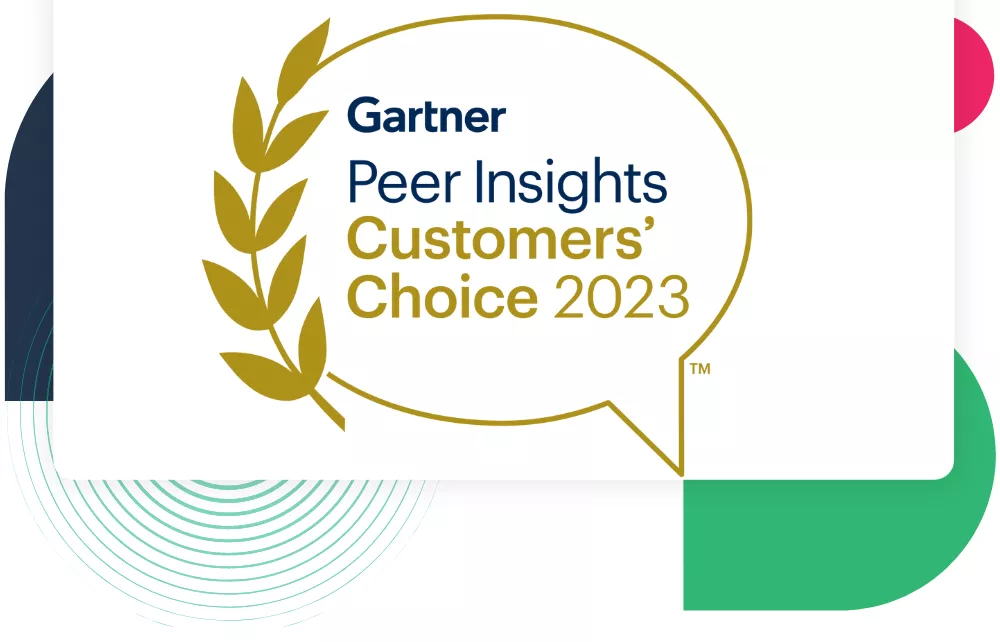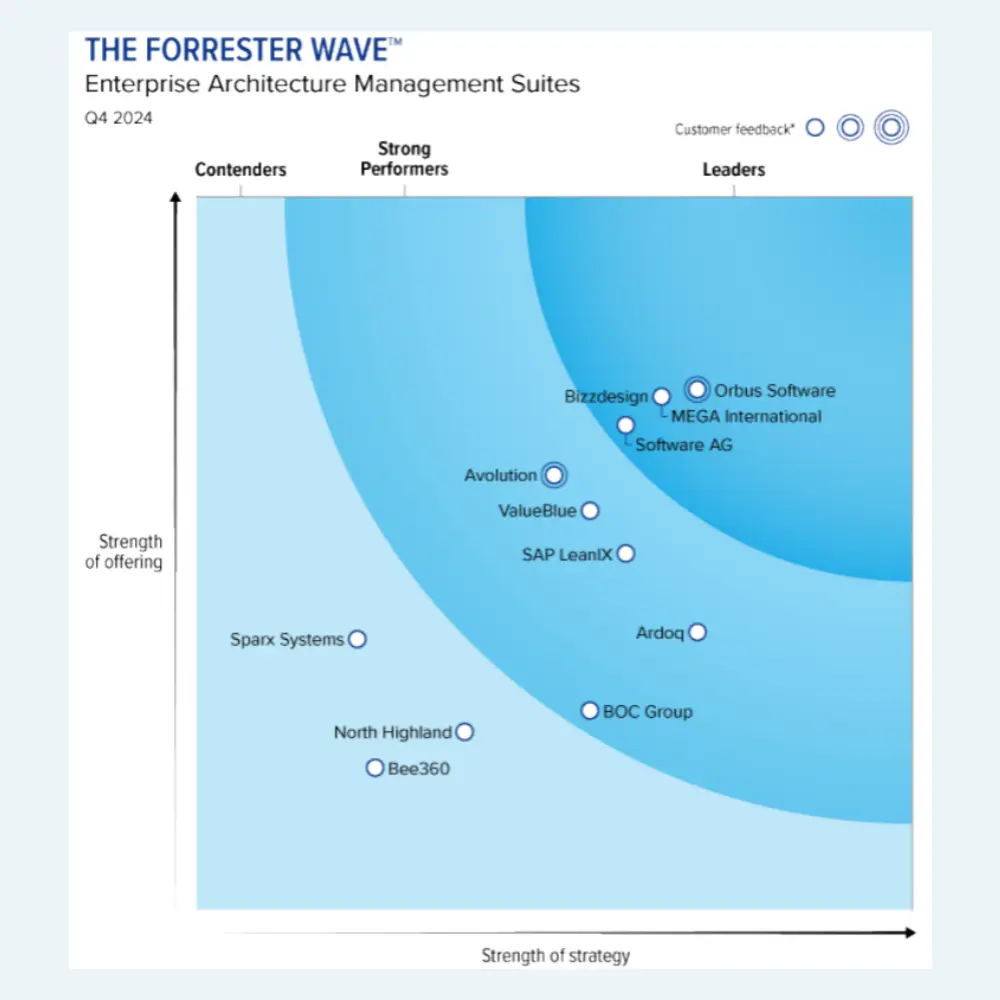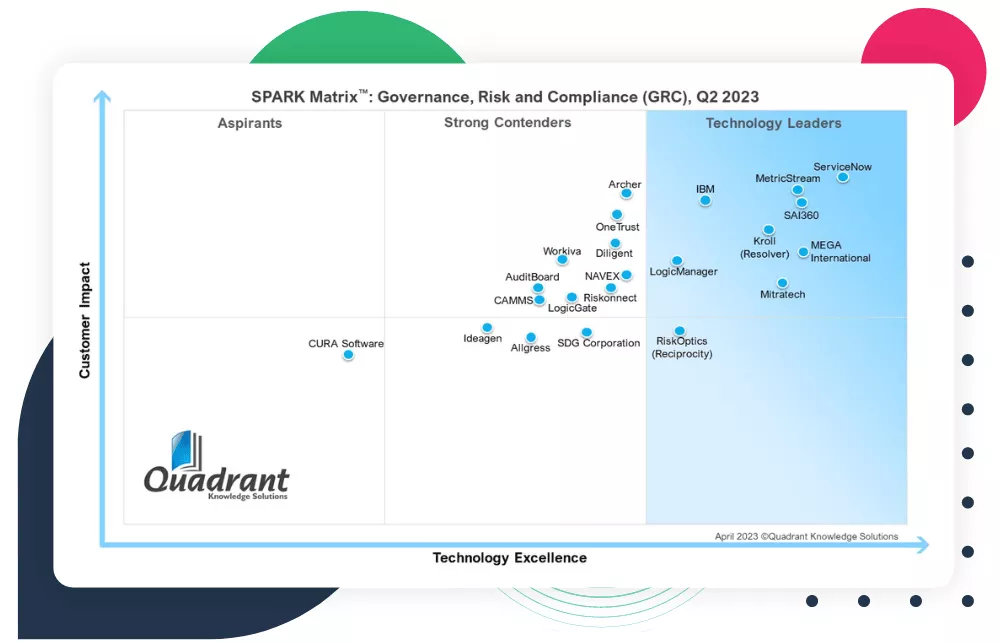
Trends in Enterprise Architecture 2024
The world of enterprise architecture (EA) is constantly evolving. Professionals must stay up to date with the latest key trends, emerging technologies, and strategic shifts that are continuously changing the EA landscape.
At the MEGA EA Exchange 2023 digital conference, Andy Neill, Associate Vice President of the Technical Counselor program and Chief Enterprise Architect at the Info-Tech Research Group shared his expert insights on the current developments that EA professionals need to know.
Trending Priorities for Chief Information Officers in Enterprise Architecture
Artificial intelligence (AI) is one of the major emerging priorities for Chief Information Officers (CIOs). Many companies are investing significant amounts into AI, but these investments are not quite as high as they may perhaps wish. Right now, AI is currently a growing investment. This is to say that funds have been put aside by companies for investment into AI, but many companies are not as yet fully invested in AI.
Companies are investing in areas such as cybersecurity, cloud computing, application programming interfaces (API), and data management solutions. Cybersecurity is always a top investment priority. Companies always want to ensure that their ecosystems are secure and reduce the risk of any kind of attack.
Investments have stagnated in on-premises servers such as mainframes or standard applications that are on bare metal or in a data center. Enterprise architects must now focus on assisting companies in moving to cloud systems.The focus should be on transforming workloads into cloud systems.
Currently, 21%of companies are not invested in mixed reality (augmented or virtual reality) systems, but they plan to invest in such technologies after 2024. 81% of companies have no plans to invest in quantum computing. Blockchain, robotics, or drones are also areas of low investment. No code/low code platforms are a growing investment area, however, as are robotic process automation (RPA) and intelligent process automation (IPA).
The Main Challenges for Enterprise Architects
One of the main challenges for enterprise architects is agility. “Agility is not necessarily agile or safe or those types of frameworks. Rather, it is the ability of architecture to pivot and be nimble when a business is changing what they're doing.” Businesses are changing their processes because of the advent of exponential IT such as AI. Architects have to keep up with developments in AI and act as thought leaders. EA professionals must make sure the business is making the right decisions with investments in AI. Enterprise architects must align IT ecosystems with business objectives.
“EA professionals can do that by managing the business architecture. This involves understanding how the business works, how the business collaborates, what business capabilities are involved, understanding how the process works, and how the process can potentially be improved by the advent of new AI-based technology. This is an important point for architects to be involved in.”
There is also the issue of bad data and security. Concrete, good-quality AI requires:
- A reliable data pipeline.
- A data warehouse.
- A data lakehouse.
- Good data integration.
Enterprise Architect Maturity – Strategic Alignment, Organizational Structure, Tools
Professionals must take a strategic perspective in relation to enterprise architect maturity. “We need to look at what domains are involved and what questions are being asked. Understand that questions can come from all kinds of stakeholders across many organizations. These domains include obvious EA areas such as integration and applications.” However, areas such as business architecture, information at the content architecture, and security are not seen as being part of an EA professional’s domain. These areas are where EA professionals should be focusing on. Regarding organizational structure, there are instances where individuals may not be informed about the appointment of a head of architecture. Without awareness of the existence and roles of an architecture team, engaging with them becomes challenging.
The other problem is the staffing level. Those who do understand what enterprise architects do often don't have enough people to do those activities. On the skills side, there is a lack of documentation. Although architects are present and actively engaged in projects, their specific skills remain unknown to others. The ability to list the specific skills that EA professionals have is lacking. Tools that are used for enterprise architecture are also an issue for many companies.
“When we did surveys across many organizations only 8% of the people said ‘Yes, we have an architecture tool.’ So, they might have an architecture tool and not know about it. 25% said they don't have a tool at all or perhaps they're using Visio or PowerPoint or other content tools to model architecture.”
Many people are unaware of EA tools or simply believe that EA tools are only for use by the EA department. Collaboration between architects, businesspeople, analysts, or data experts is minimal.
The Importance of Collaboration Across Guilds for EA teams
One of the important points of communication in EA is the collaboration between different architects. Organizations need to create a robust collaboration mechanism. We call these mechanisms guilds. A company might have a business architecture guild, a technology architecture guild, and a data architecture guild. Guilds enable people who are involved in different disciplines to come together and share ideas and bring up proposals on new stands.
These skills are important to put in place. Without them, the satisfaction of the business with the communication from IT is lowered.
“If you have technology architects talking to the business without a holistic view, if there’s not one voice from the technology architecture perspective, it confuses the business, and they are not satisfied with communication from IT.”
Artificial Intelligence and EA
With the advent of exponential IT and the increasing use of AI, enterprise architects must lean in. EA professionals must educate, coach, and mentor those in the organization. They need to show what AI applications, solutions, and technologies are available. Stakeholders need to see how AI can help the business.
AI is only set to improve. It is sure to become more ubiquitous and intrusive. Business is buying AI software right now. It is up to enterprise architects to explain exactly what AI is and how AI arrives at its solutions.
EA professionals must make sure AI is trustworthy. There is a need for a good data pipeline and good data quality. If an AI is not trained on reliable, quality data, then the output will be lacking in quality. Architects can put in place tools and technology to make this process more transparent. Stakeholders should know where data comes from, where it goes, and how decisions were reached.
“How do you integrate these roles and responsibilities? When you're implementing AI and you're training your models, you've got things like DataOps and MLOps. These need to connect together so that you can automatically create new implementations and new versions of the trained model as you go forward. Architects must ensure optimal pipelines for quick turnarounds during diverse model training or when incorporating new data and pipelines."
Architecture can help in providing the information to enable organizations to monitor data accurately. This ensures reliable outputs. Businesses can make more informed decisions on how they use AI.
Towards Zero Trust Architecture
One of the areas to focus on when talking about zero trust architecture is identifying a trust score. When someone logs into a system with their enterprise digital identity, an organization needs to determine how much it can trust that individual. A trust score method needs to be implemented. This can be a list framework, an International Organization for Standardization (ISO) framework, or another method.
The trust score will be reflected by how a person logs in. Did they use biometrics to log in? Multi-factor authentication? How the person authenticated themselves will provide a level of authority. This authority can also be attained by looking at what network was logged into, who the individual is, where they come from, and what organization they are with. All these parameters contribute to the trust score.
The trust score is matched to the information, service, or application that the person is trying to access. Based on that, we can then match those two together for access to the organization or to the application. This process continuously changes and evolves.
“Because it's metadata-driven, a company’s ability to implement a zero trust architecture is dynamic. There are lots of different technologies and lots of different architectural components that need to be put in place in order to implement zero trust architecture from the ground up.”
MEGA Leadership Related Content
See the Bigger Picture and Accelerate Business Value
Discover how organizations rely on us to transform their IT
Hear More From Companies Like Yours






